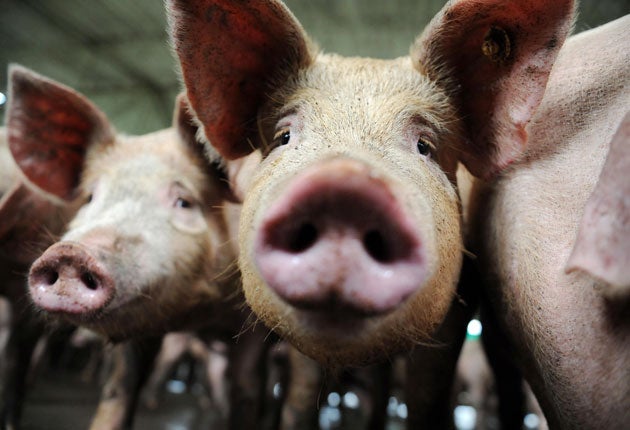Steve Connor: Virus may mutate to pose deadlier threat

One of Britain's leading flu experts has urged the Mexican authorities to investigate the level to which the country's pig population is infected with the H1N1 strain of influenza virus responsible for the human outbreak.
A genetic analysis of the H1N1 virus present in humans has found that it contains viral genes shared with swine flu, but as yet there has been no confirmed cases of the virus in pig herds in Mexico, said Professor Alan Hay of the MRC National Institute for Medical Research in Mill Hill.
"It is very likely that the source of the human outbreak was pigs, but as yet the source has not been identified. The most likely way to become infected with a virus that is infecting a pig is by reasonably close contact," Professor Hay said.
"One would speculate that pig farms were a probable source of the human outbreak and I think it is very important that the authorities in Mexico establish the degree of infection that has been in pigs recently in Mexico," he said.
"Of particular interest and importance is identifying any viruses that could have been responsible for such infections and whether that virus has the same genetic makeup as the one that is causing infections in humans," he added.
Pigs are known to be able to incubate both human and avian flu viruses, as well as swine flu, and this multiple infection in one animal can lead to "triple reassortment" whereby a completely novel influenza virus emerges that can then sweep through the human population as pandemic flu, Professor Hay said.
"The pig is readily infected by both human viruses and avian viruses because within their respiratory tract they have receptors – protein molecules – to which viruses bind for both the human viruses and the avian viruses," he said.
"Humans in general do not catch bird viruses. These avian viruses cannot readily infect us in general because of this big species barrier between birds and humans. But the barrier is a lot lower both for human going to pig and from pig going to human and it's because the pig has these receptors for the human virus."
If swine herds in Mexico were the origin of the new H1N1 strain, which seems increasingly likely, then it probably jumped the species barrier from pigs into humans when farm workers or locals living near to pig farms came into close physical contact with either pigs or farm equipment contaminated with the virus – unlike avian flu, however, swine flu is not transmitted through faeces.
"As with humans, flu in pigs is something that replicates in the respiratory tract and is transmitted by respiratory secretions. But you can get infected by flu both by aerosol transmission – by coughing and sneezing – or from surfaces that become contaminated," Professor Hay said.
Now that the H1N1 virus has spread within the human population it can continue to evolve into forms that can be more easily transmitted between people, as well as into forms that become more dangerous over time.
"Many of the infections, particularly in the United States and elsewhere have not been due to exposure to pigs and many of the infections in Mexico have not been associated with contact with pigs, it is quickly clearly spreading in the human population," Professor Hay said.
Scientists fear that as the H1N1 strain of the virus circulates within the human population it could undergo further mutations that could make it more virulent, and deadly, over time. This could lead to second or third waves of the pandemic that cause high death rates.
"The rationale has been that in the past there has been examples of this, especially when the disease is spreading at a time of the year when flu is not normally circulating so effectively, which would be the case of the northern hemisphere at the moment," Professor Hay added.
Angus Nichol, head of the Influenza Programme at the European Centre for Disease Control in Stockholm, said: "Influenza viruses are very slippery creatures. You don't know how they are going to behave and their behaviour can change over time. The relatively few deaths we have seen so far could be the tip of an iceberg."

Join our commenting forum
Join thought-provoking conversations, follow other Independent readers and see their replies